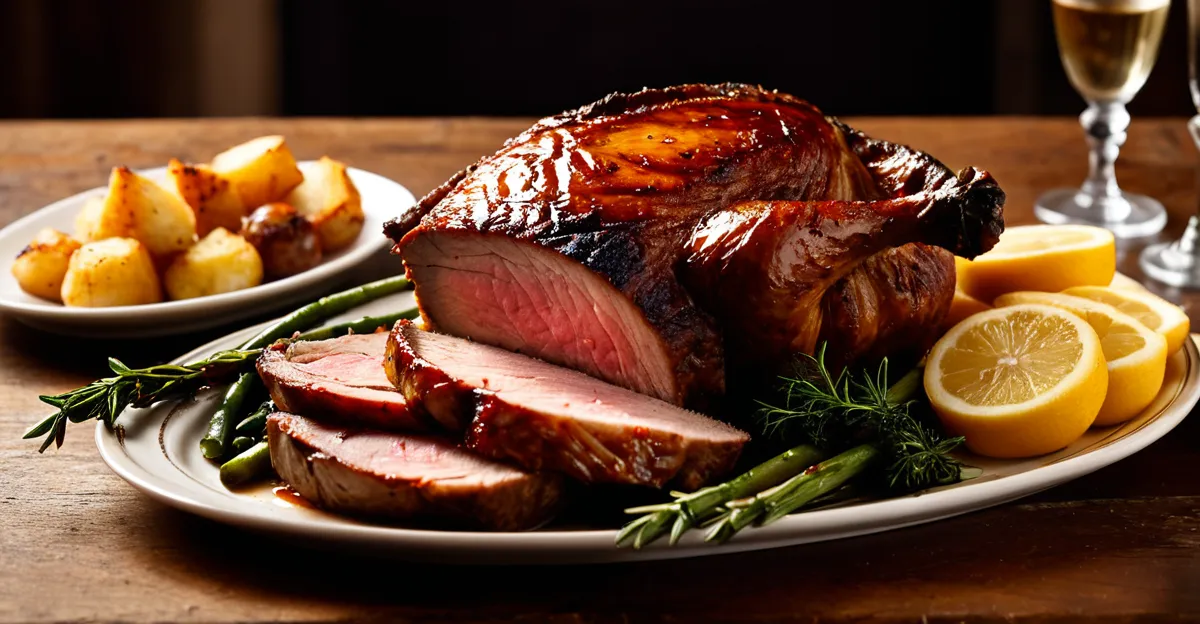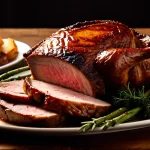Essential Ingredients for a Classic British Roast Dinner
A traditional British roast centers on a selection of roasted meats, each bringing its own distinct flavour and texture. Common choices include beef, cherished for its rich depth; chicken, prized for its tender juiciness; lamb, offering a slightly gamey edge; and pork, known for its succulent meat and crackling skin. Each meat demands specific cooking techniques to reach the ideal balance of tenderness and flavour.
Equally vital to the British Sunday roast is the roast potato. The secret lies in achieving a crusty, golden exterior combined with a fluffy interior. Parboiling the potatoes slightly before roasting allows for this perfect texture contrast.
Have you seen this : How can you make a delicious sticky toffee pudding at home?
No roast dinner essentials list would be complete without Yorkshire pudding. This classic side absorbs gravy beautifully, enhancing every mouthful. Its light, airy structure and crispy edges create an ideal accompaniment to the main meat and sauces, elevating the entire meal to a true British dining experience. Mastering these elements sets the foundation for an unforgettable classic roast dinner.
Key Vegetable Sides and Accompaniments
Enhancing the traditional British roast
Additional reading : How can you make a classic toad in the hole?
British roast vegetables are essential to complement the rich flavours of the meat. Typical Sunday roast vegetables include carrots, parsnips, broccoli, green beans, and peas. These vegetables are often roasted alongside the meat or lightly steamed to retain their vibrant colours and natural sweetness, providing balance and texture to the meal.
A crucial component of any classic roast dinner sides is the gravy. Made from meat drippings, stock, and seasoning, gravy adds moisture and depth, tying the entire roast together. Preparing a smooth, flavourful gravy involves deglazing the roasting pan and simmering until thickened to perfection.
Additional accompaniments further elevate the British Sunday roast experience. Stuffing, made with herbs and breadcrumbs, brings aromatic complexity. Bread sauce, a creamy traditional condiment made from milk and breadcrumbs, adds comforting richness. Mint sauce is frequently paired with lamb, cutting through its gaminess with a refreshing zest.
Together, these British roast vegetables and complements complete the plate, making the traditional British roast a satisfying and well-rounded feast.
Tips for Achieving Authentic Flavour and Presentation
Achieving an authentic British roast relies heavily on precise seasoning and timing. For flavour, seasoning meat generously with salt, pepper, and herbs before roasting enhances its natural taste. Resting the meat after cooking allows juices to redistribute, ensuring tenderness and moistness. Timing each component carefully—starting with denser vegetables and meats first, followed by quicker-cooking sides—prevents overcooking and preserves texture.
When it comes to classic roast tips for presentation, serving the meal in the traditional order matters. Begin with the meats, then add roast potatoes and British roast vegetables, finishing with Yorkshire pudding nestled alongside, topped generously with rich gravy. This arrangement showcases each element distinctly while maintaining harmony on the plate.
Regional variations add diversity to the roast dinner presentation, such as incorporating black pudding in northern England or adding cauliflower cheese in some parts of Britain. Understanding these subtle differences allows cooks to tailor the experience authentically. Overall, neat plating combined with careful seasoning and timing elevates the entire meal, fulfilling expectations of a true British Sunday roast.








